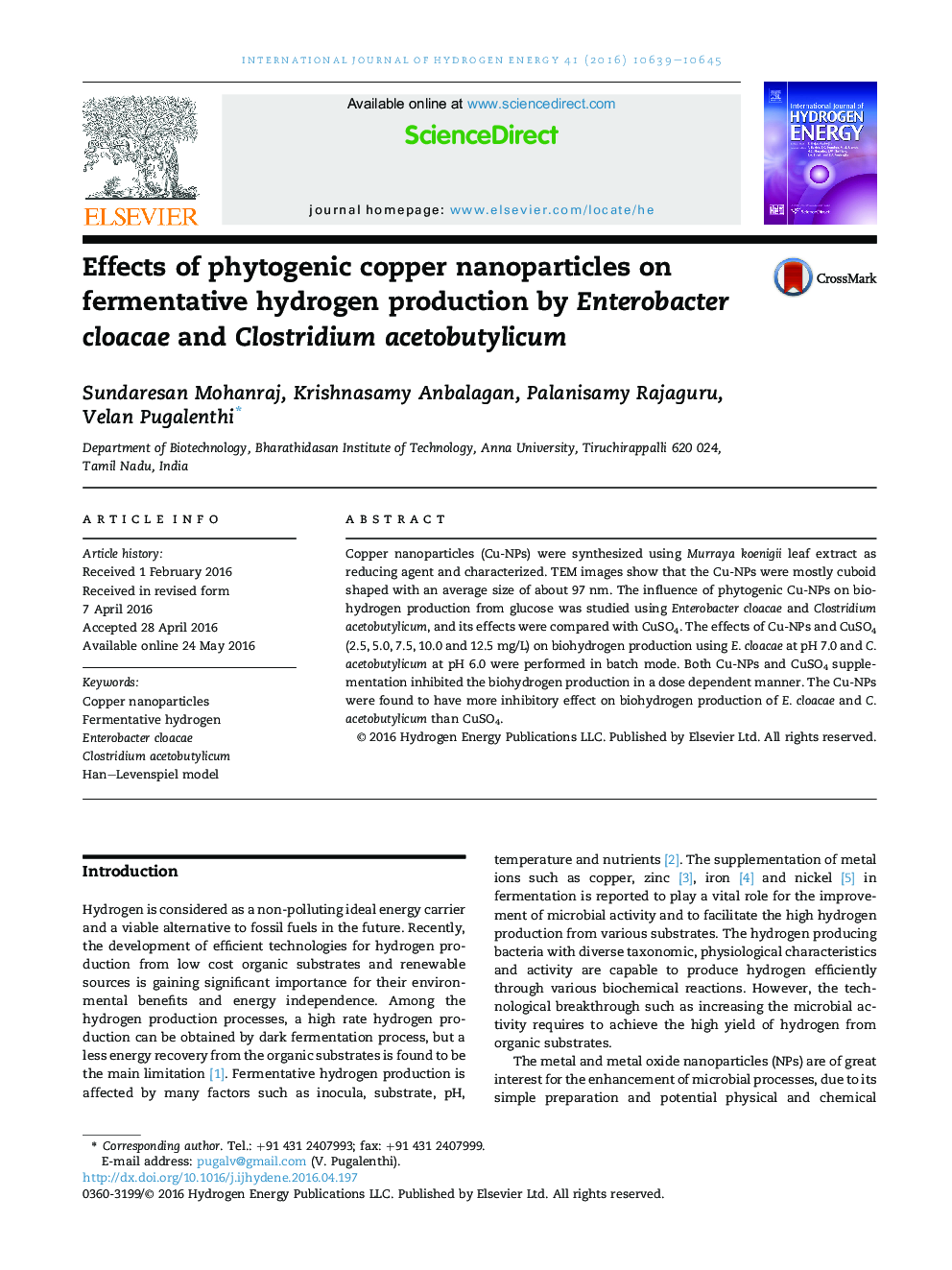| Article ID | Journal | Published Year | Pages | File Type |
|---|---|---|---|---|
| 1276789 | International Journal of Hydrogen Energy | 2016 | 7 Pages |
•Phytogenic CuNPs inhibited the anaerobic fermentation process using pure strains.•The inhibitory model was analyzed by modified Han–Levenspiel model.•Inhibitory effect of CuNPs on E. cloacae and C. acetobutylicum was high than the Cu2+.•Cu2+ and CuNPs influenced the negative effects on acetate/butyrate fermentation type.
Copper nanoparticles (Cu-NPs) were synthesized using Murraya koenigii leaf extract as reducing agent and characterized. TEM images show that the Cu-NPs were mostly cuboid shaped with an average size of about 97 nm. The influence of phytogenic Cu-NPs on biohydrogen production from glucose was studied using Enterobacter cloacae and Clostridium acetobutylicum, and its effects were compared with CuSO4. The effects of Cu-NPs and CuSO4 (2.5, 5.0, 7.5, 10.0 and 12.5 mg/L) on biohydrogen production using E. cloacae at pH 7.0 and C. acetobutylicum at pH 6.0 were performed in batch mode. Both Cu-NPs and CuSO4 supplementation inhibited the biohydrogen production in a dose dependent manner. The Cu-NPs were found to have more inhibitory effect on biohydrogen production of E. cloacae and C. acetobutylicum than CuSO4.
Graphical abstractFigure optionsDownload full-size imageDownload as PowerPoint slide
